Application
equipment
In this section you will find a range of practical information related to our solutions. In the articles, we share our experience, discuss implementation steps and highlight good practices. It is a reliable source of information and advice on the provision of drinking water in public spaces, the legal regulations in this area, the benefits of installing drinking water dispensers and the technological aspects in this field.
We look forward to reading!

With winter approaching, it's time to think about protecting your outdoor water systems, such as your fire sprinklers, from low temperatures. If you have outdoor sprinklers that are not made frost-proof, preparing them properly for winter is crucial. Neglecting this process can lead to serious damage that may require costly repairs.
Water that is left in the system can freeze during freezing weather, expand and cause cracks in the pipes or in the sprinkler itself. Even the smallest amounts of water can contribute to damage, which is why it is so important to ensure proper maintenance.
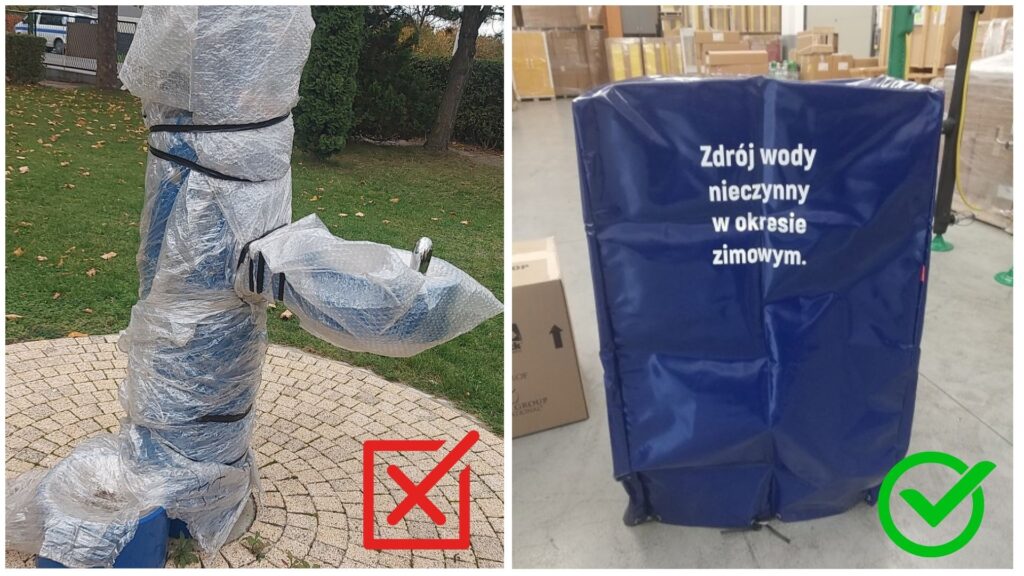
If you are unsure how to protect your water supply yourself for the winter, we encourage you to use our service. Our team of specialists is experienced in properly preparing water systems for the winter period.
Why use the assistance?
Remember, properly preparing your outdoor drains for winter is an investment in their longevity and saves on future repairs. Contact us today and have us comprehensively prepare your installation for the upcoming winter season!
In this section you will find a range of practical information related to our solutions. In the articles, we share our experience, discuss implementation steps and highlight good practices. It is a reliable source of information and advice on the provision of drinking water in public spaces, the legal regulations in this area, the benefits of installing drinking water dispensers and the technological aspects in this field.
We look forward to reading!

In recent years, the topic of access to clean drinking water has gained prominence across Europe, and the European Union has taken concrete steps to ensure high quality drinking water for its citizens. Poland, like other member states, is obliged to implement the solutions contained in Directive (EU) 2020/2184 of the European Parliament and of the Council of 16 December 2020 concerning the quality of water intended for human consumption. This Directive introduces new standards and obligations that must be introduced into national legislation.
Although the implementation deadline passed on 12 January 2023, Poland has not yet implemented all the changes, resulting in the preparation of an amendment to the Act on collective water supply and collective sewage disposal. According to its provisions, local authorities - mayors and city presidents - will be obliged to increase residents' access to drinking water by providing public water points.
Directive 2020/2184 is part of a broader European Union policy to improve public health and protect the environment. Here are the main features of this document:
In the context of the amendment of the Polish law on collective water supply, local authorities will have to face new challenges. One of the main obligations under the bill will be to provide residents with better access to drinking water by creating public water points. Solutions such as public water springs or stations with clean drinking water will become a necessity in public spaces such as parks, squares or city centres.
It should be noted that solutions of this type not only comply with the requirements of the EU directive, but are also an effective way of promoting drinking tap water as an alternative to bottled water, which has a positive impact on both the environment and residents' wallets.
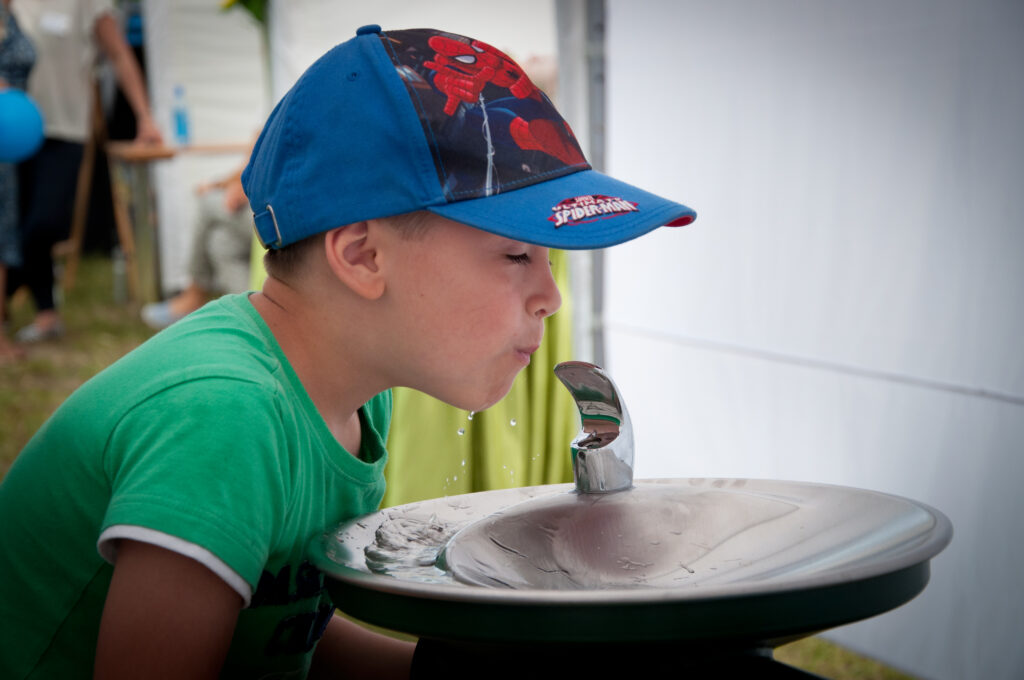
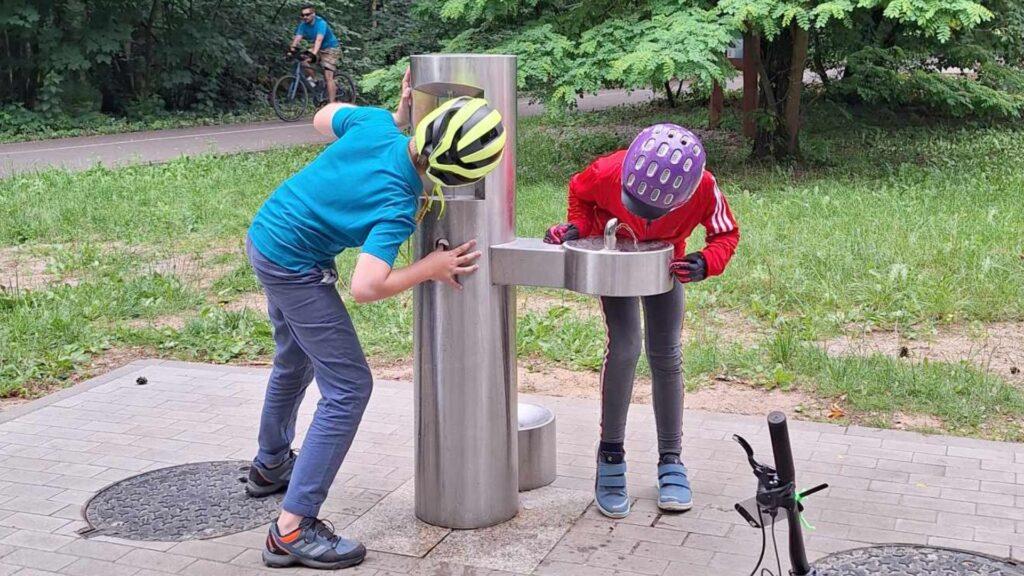
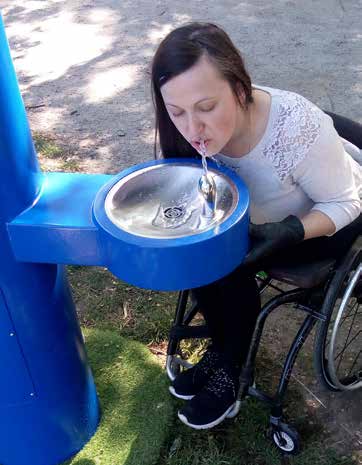
In response to new regulations and the needs of local authorities, we offer modern and efficient solutions to help meet the requirements arising from the EU directive. Our water spigots and drinking water stations not only facilitate residents' access to clean water, but are also recommended in legal standards as innovative solutions to support municipal infrastructure. They make it easy for local authorities to meet their new obligations while promoting an environmentally friendly approach to water use.
The amendment of the Act on collective water supply is a key step towards improving access to drinking water in Poland. The introduction of public water points will help to meet the requirements of the EU Directive 2020/2184 and will also have a positive impact on the health of residents and environmental protection. Using innovative solutions available on the market, such as wells and water stations, local governments can easily meet the new challenges and provide high-quality drinking water for all.
In this section you will find a range of practical information related to our solutions. In the articles, we share our experience, discuss implementation steps and highlight good practices. It is a reliable source of information and advice on the provision of drinking water in public spaces, the legal regulations in this area, the benefits of installing drinking water dispensers and the technological aspects in this field.
We look forward to reading!

The modern working environment is where we spend a significant part of our day. It generally consists of intensive desk work, meetings or tasks that require constant concentration. In such conditions, regular drinking of coffee and tea has become an almost inseparable part of the working day. However, it is worth remembering that, in addition to these popular drinks, there is one key element that has a huge impact on our health, concentration and productivity - the water.
Water is essential for the proper functioning of our bodies. Hydration not only affects our wellbeing, but also our mental and physical abilities. Here are some of the benefits of drinking water regularly at work:
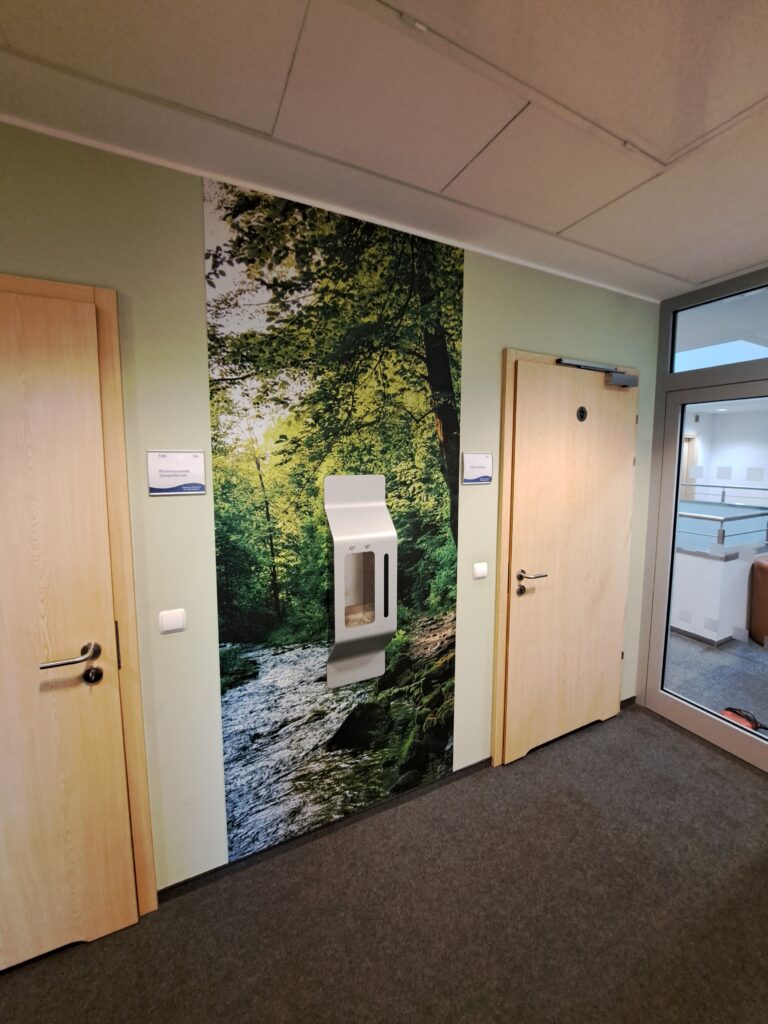
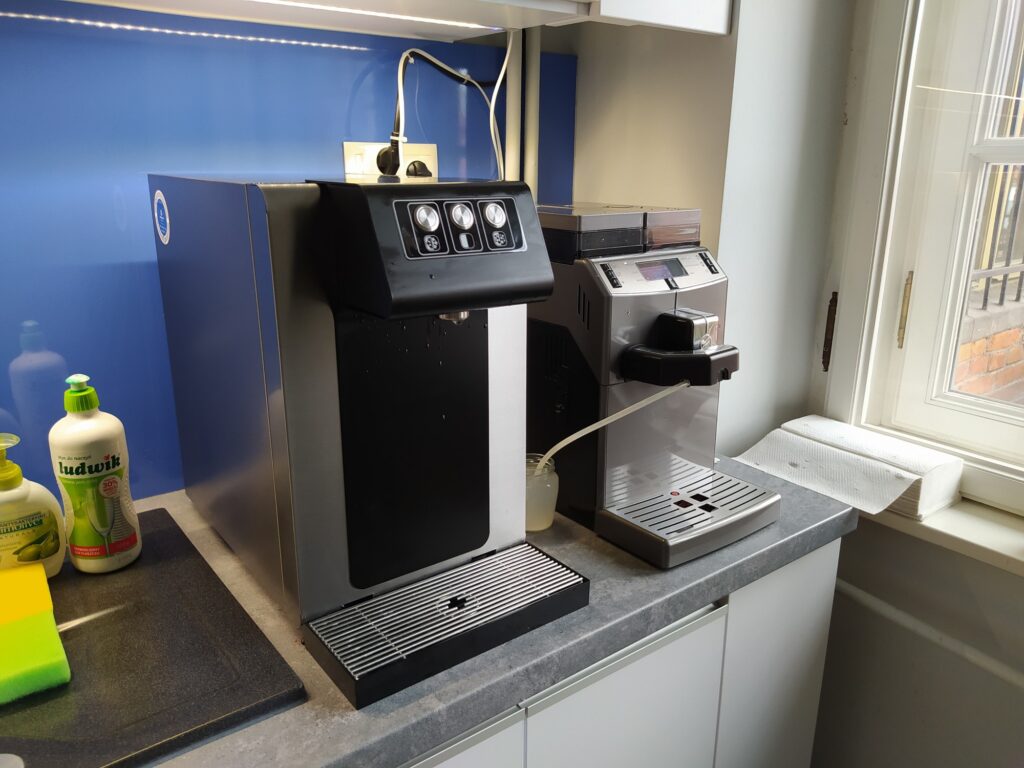
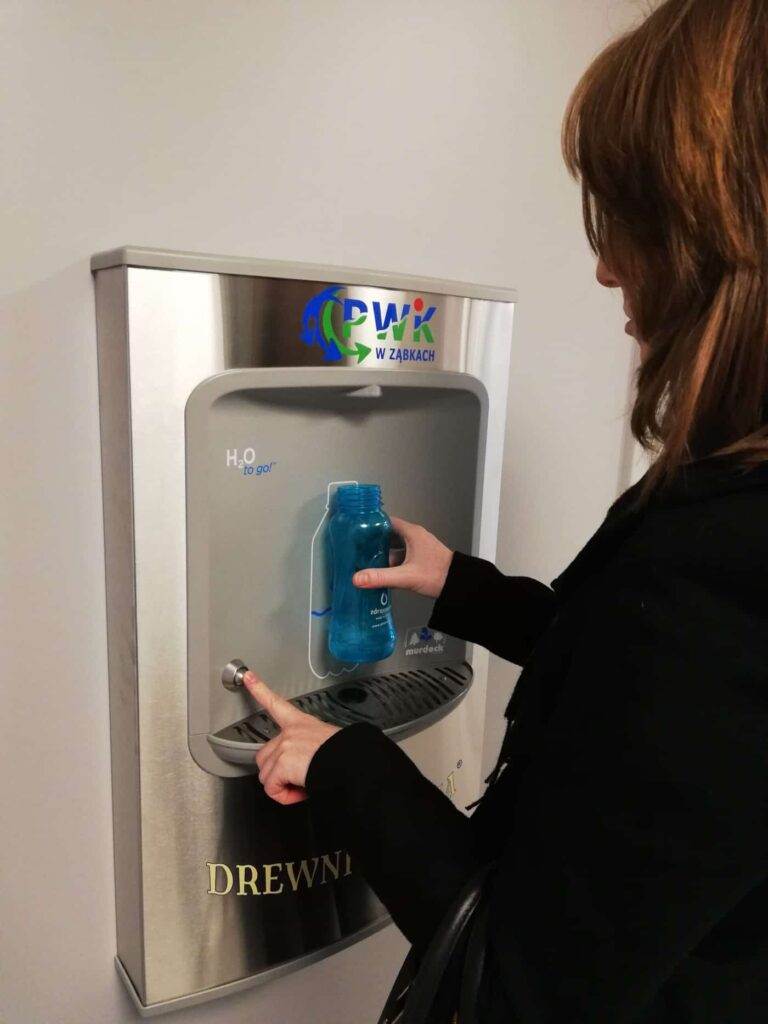
Understanding the importance of water in the workplace is the first step to ensuring that employees are adequately hydrated. It is worthwhile for employers to ensure that water is always available. To this end, the ideal solutions are water dispenserswhich bring a number of benefits:
Drinking water regularly at work is key to improving employee health, concentration and productivity. Investing in water dispensers is a step towards going green, saving money and keeping your team comfortable. Thanks to such devices, employees have constant access to clean, fresh water, which not only supports their health but also increases productivity. It is worthwhile for employers who want to create a friendly and functional working environment to consider such a solution.
In this section you will find a range of practical information related to our solutions. In the articles, we share our experience, discuss implementation steps and highlight good practices. It is a reliable source of information and advice on the provision of drinking water in public spaces, the legal regulations in this area, the benefits of installing drinking water dispensers and the technological aspects in this field.
We look forward to reading!

After the summer holidays or an extended break, when schools fill up with students again, one essential element that is often forgotten is water springs and dispensers. Although they are used without much thought on a daily basis, the quality of the water that comes out of them is crucial for the health of pupils and school staff. To ensure that it is of an adequate standard, it is necessary to sanitise, clean and regulate these devices after a prolonged break.
During the summer holidays, when schools remain closed and water systems are unused, contaminants can build up in pipes and reservoirs. The lack of regular water flow encourages the growth of bacteria, including dangerous microorganisms like Legionellawhich can endanger the health of users. In addition, improperly maintained equipment can affect the quality of the water, altering its taste, odour and clarity.
Sanitisation of water dispensers and springs is crucial to ensure that the water supplied meets all sanitary and quality standards. It includes thorough cleaning of all equipment components, disinfection of surfaces in contact with the water and removal of sediment and biofilm that could promote bacterial growth.
An important step is also checking the filters. Filters that have been inactive for a long time can lose their properties and become a source of contamination. Replacing or cleaning filters is therefore essential to ensure clean and healthy drinking water.
It is often forgotten that after a prolonged break, equipment such as water springs or water dispensers may need adjusting. Regular servicing not only maintains the quality of the water, but also extends the life of the equipment. This includes, among other things, checking water pressure, seals and checking that all mechanisms are working properly.
Healthy and safe water is a fundamental right for every pupil and school staff member. Regular cleaning and sanitising of dispensers avoids health risks, improves user comfort and ensures that children drink water of the highest quality. It is therefore worth enlisting the help of professionals such as our service technicians and having your water dispensers professionally cleaned and sanitised once a year.
In this section you will find a range of practical information related to our solutions. In the articles, we share our experience, discuss implementation steps and highlight good practices. It is a reliable source of information and advice on the provision of drinking water in public spaces, the legal regulations in this area, the benefits of installing drinking water dispensers and the technological aspects in this field.
We look forward to reading!
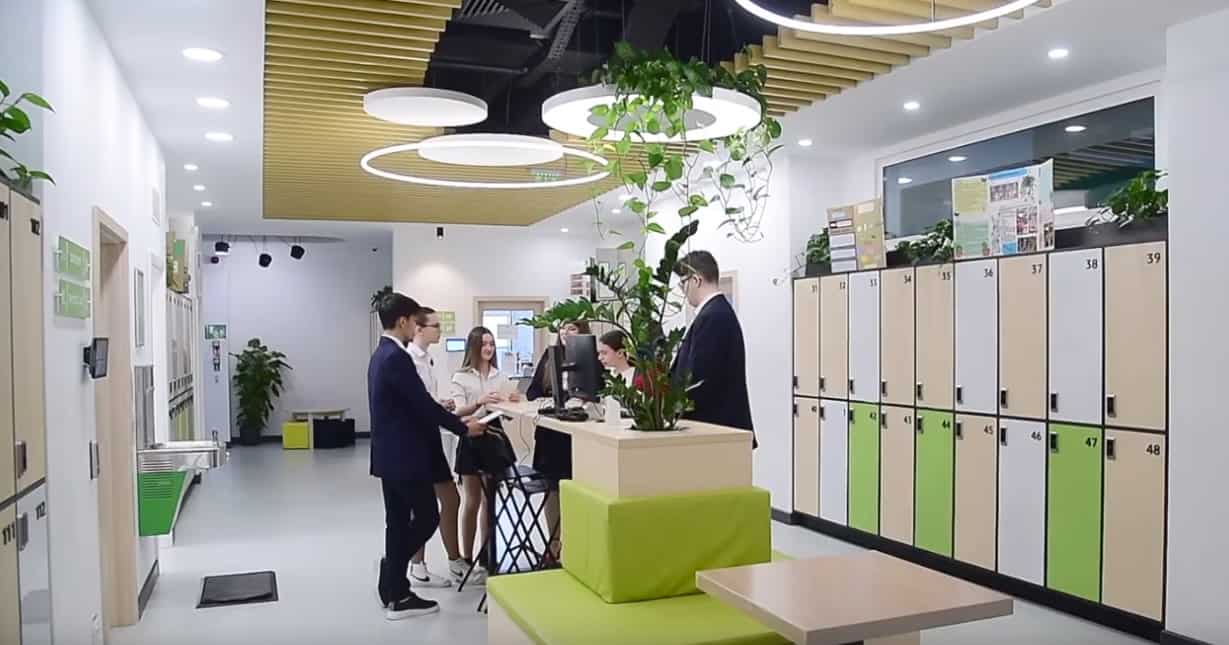
The summer holidays are a time eagerly awaited by pupils and teachers alike. It is also the perfect opportunity to carry out renovation and modernisation works in schools without disrupting daily educational activities. One such activity worth considering is the installation of drinking water springs and dispensers. Why is it worth doing this right now?
Carrying out renovations and installing new equipment during the school year can be problematic. The presence of children, teachers and school staff often complicates the execution of renovation work. During the holidays, schools are empty, allowing any necessary work to be carried out without disruption or stress. The installation of drinking water springs and dispensers goes much more smoothly and the risk of delays and complications is minimised.
Our solutions for drinking water springs and dispensers are designed to make installation as simple as possible. They do not require major structural changes or complicated construction work. As a result, installation is quick and trouble-free. The use of modern technology and well thought-out designs means that our units can be easily adapted to the different infrastructural conditions in schools.
When you opt for our drinking water springs and dispensers, you do not have to worry about the technical aspects. Our service department is always ready to help. We provide support at every stage - from planning and installation to regular maintenance and possible repairs. Our specialists are available to answer any questions and dispel any doubts, making the whole process even easier.
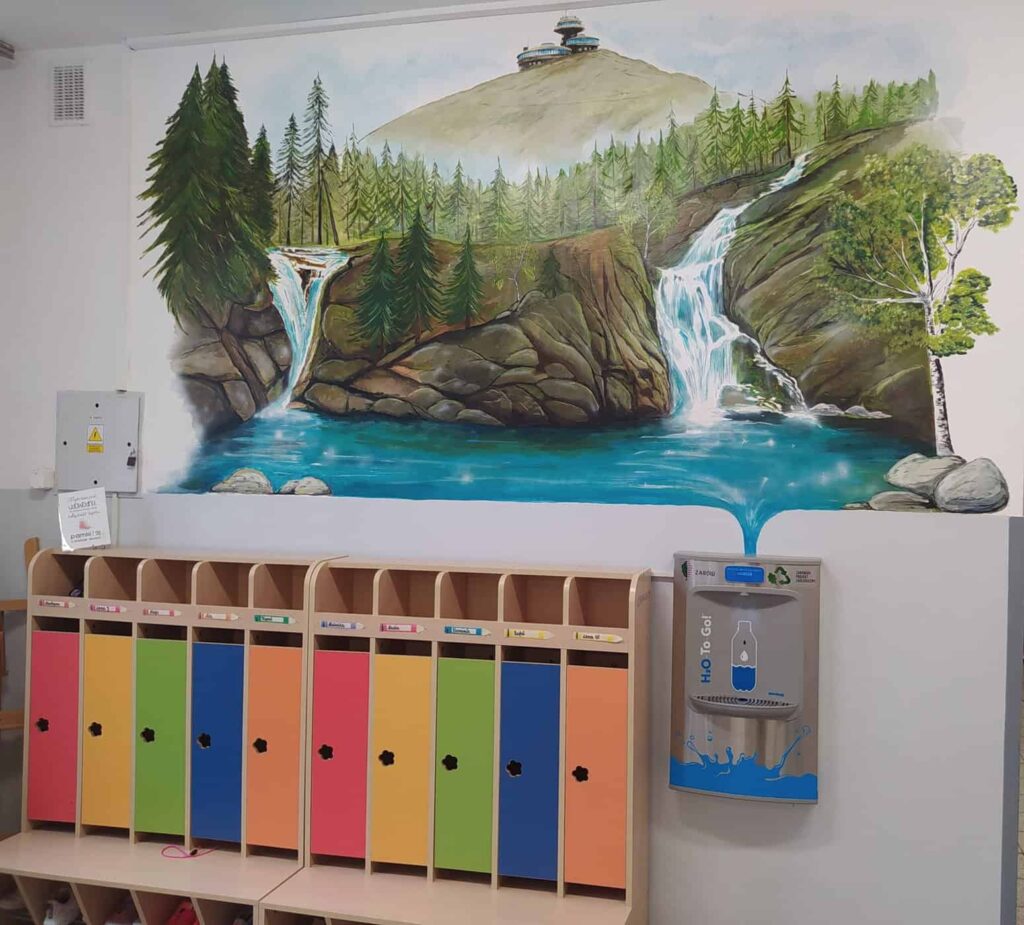
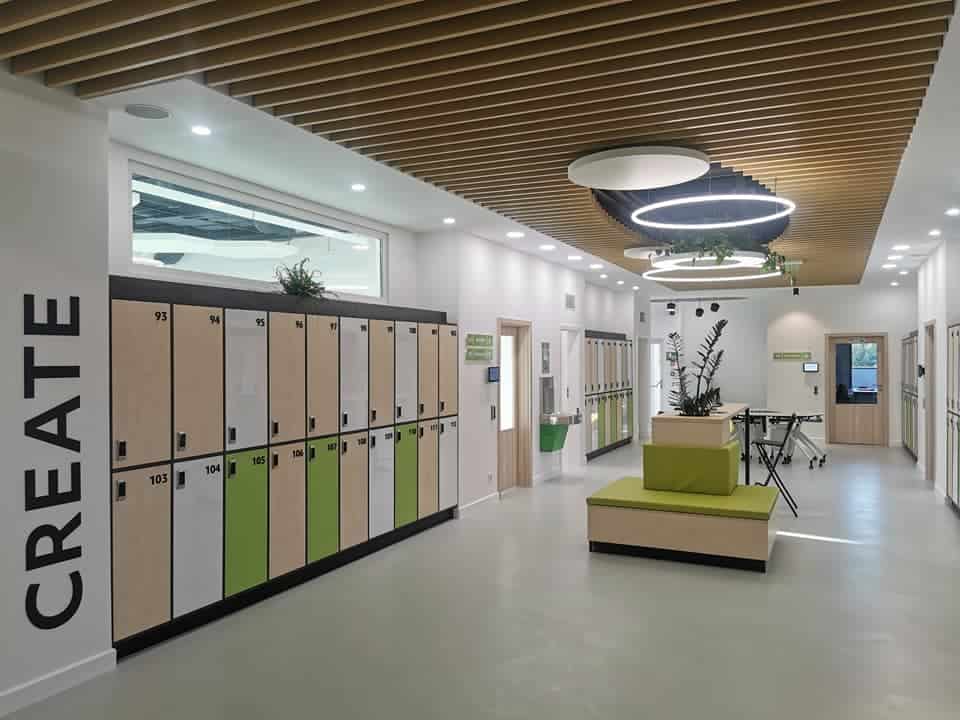
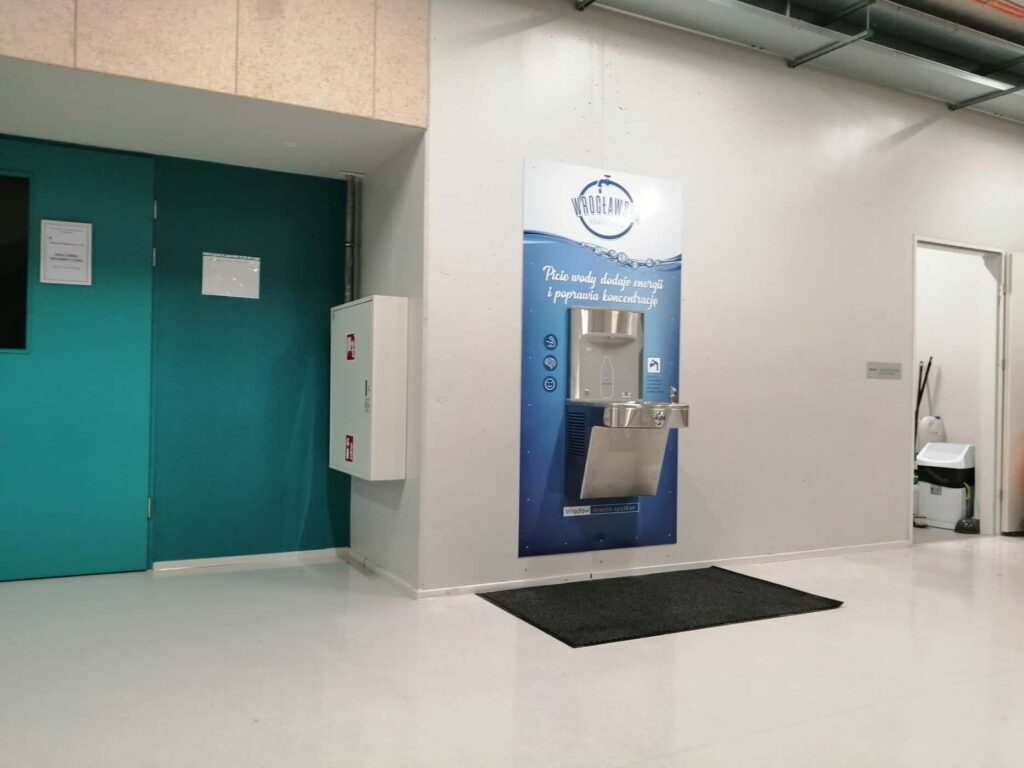
Ensuring access to fresh, clean drinking water in schools is of paramount importance for the health and wellbeing of pupils and staff. Drinking water regularly improves concentration, supports learning processes and prevents dehydration, which can lead to fatigue and health problems. Drinking water dispensers and springs are becoming an indispensable part of modern, health-conscious educational establishments.
The holidays are the perfect time to invest in school infrastructure. Installing drinking water springs and dispensers during the holiday season is not only convenient, but also a strategic move that will pay dividends for years to come. Thanks to the simplicity of installation and the support of our service department, the process is quick and hassle-free. By investing in our solutions, you are ensuring the health and comfort of students and school staff.
Feel free to contact us and take advantage of our offer - together we can make your school an even better place! 🌟
In this section you will find a range of practical information related to our solutions. In the articles, we share our experience, discuss implementation steps and highlight good practices. It is a reliable source of information and advice on the provision of drinking water in public spaces, the legal regulations in this area, the benefits of installing drinking water dispensers and the technological aspects in this field.
We look forward to reading!

Water is essential for life. It accounts for about 60% of an adult's body weight and plays a key role in almost all bodily functions, such as regulating body temperature, transporting nutrients, removing toxins and hydrating tissues. Nevertheless, the question of how much water we should drink per day has no clear answer, as it depends on many factors such as age, weight, gender, physical activity, occupation, as well as environmental conditions.
Common recommendations for water intake for adults suggest that women should drink around 2.7 litres of water per day and men around 3.7 litres. However, it is worth noting that these figures include total water intake, both from beverages and food.
The greater the body weight, the greater the need for water. As a general rule of thumb, approximately 30-35 ml of water should be consumed for every kilogram of body weight. For example, a person weighing 70 kg should drink about 2.1 - 2.45 litres of water per day.
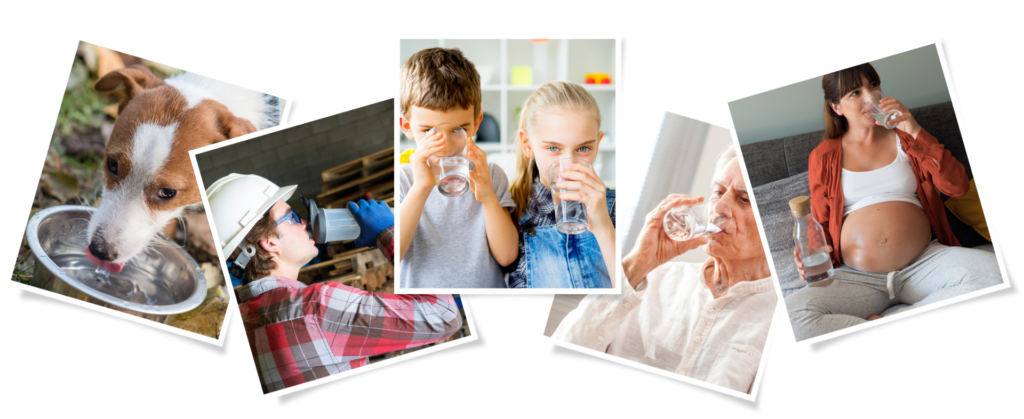
Men generally need more water than women, which is related to greater muscle mass and higher energy requirements. Muscle contains more water than fat, which also influences gender differences in requirements.
People with active lifestyles, who work out or regularly participate in sport need more water. Significant amounts of water can be lost through perspiration during intense exercise, requiring replenishment. It is recommended that physically active people drink an additional 0.5-1 litres of water for every hour of intense exercise.
High temperatures and humidity increase the need for water as the body sweats more intensively to maintain an adequate body temperature. People living in hot climates or working in high temperatures should drink more water to avoid dehydration.
The amount of water we should drink each day depends on a number of factors, such as age, weight, gender, level of physical activity, occupation and environmental conditions. The general recommendations for adults are 2.7 litres for women and 3.7 litres for men, but it is worth adjusting these values to suit individual needs. Remember that drinking enough water is key to maintaining health and wellbeing.
In this section you will find a range of practical information related to our solutions. In the articles, we share our experience, discuss implementation steps and highlight good practices. It is a reliable source of information and advice on the provision of drinking water in public spaces, the legal regulations in this area, the benefits of installing drinking water dispensers and the technological aspects in this field.
We look forward to reading!
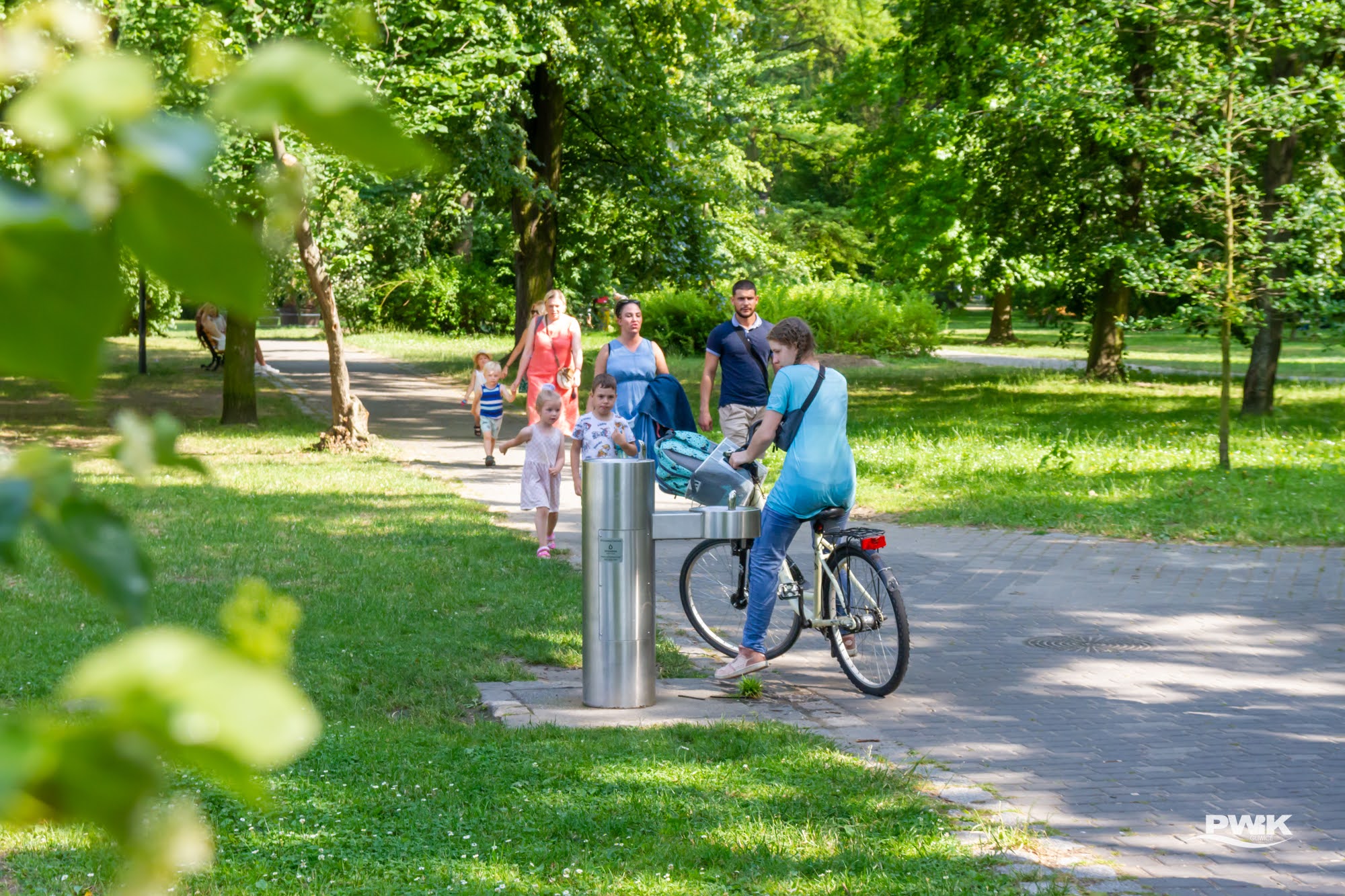
Nowadays, more and more people are engaging in outdoor physical activities such as cycling, running or walking. One of the key elements supporting these activities are drinking water outlets, which are becoming an indispensable part of the infrastructure at cycle paths and sport and recreation sites. Our drinking water outlets offer a range of benefits that translate into health, convenience and environmental protection.
During physical activity such as cycling or running, adequate hydration is key to maintaining performance and health. Drinking water dispensers placed at strategic points on cycle paths and in recreational parks allow you to quench your thirst at any time. Our range includes water dispensers both for direct consumption of water and those equipped with special bottle top-ups, allowing easy refilling of portable water containers.
One of the biggest problems in the world today is the excess of plastic waste. The introduction of drinking water dispensers helps to combat this problem by reducing the use of single-use plastic bottles. By using our sprinklers, users can easily and conveniently refill their reusable bottles, which significantly reduces waste and supports environmental efforts.
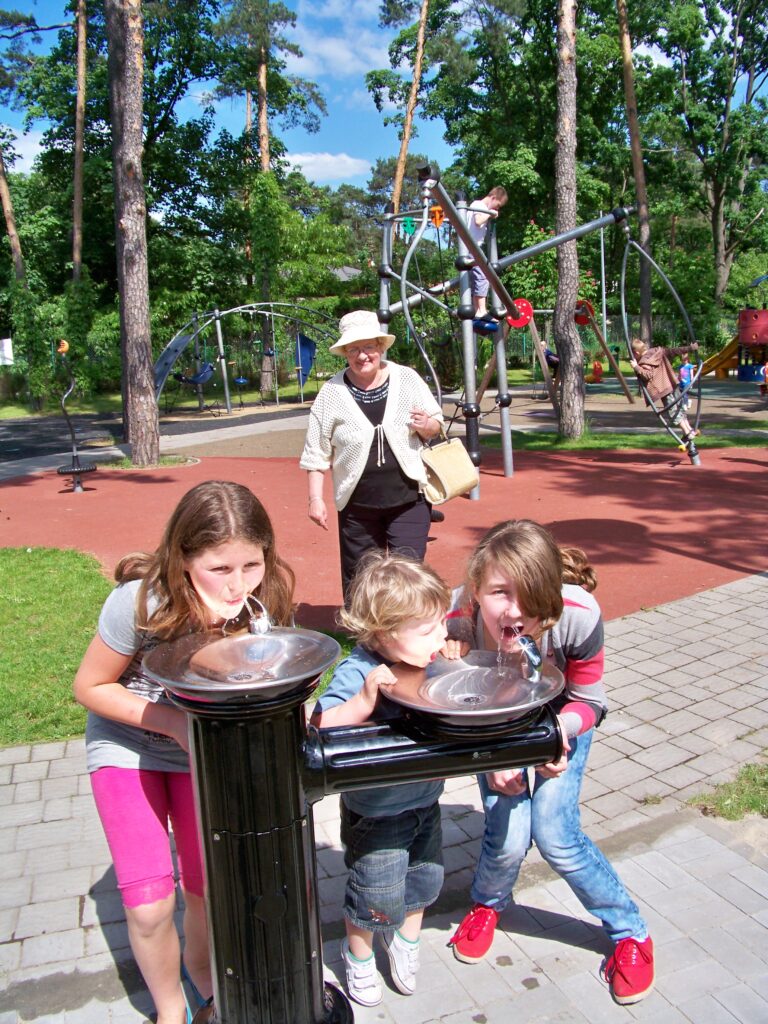
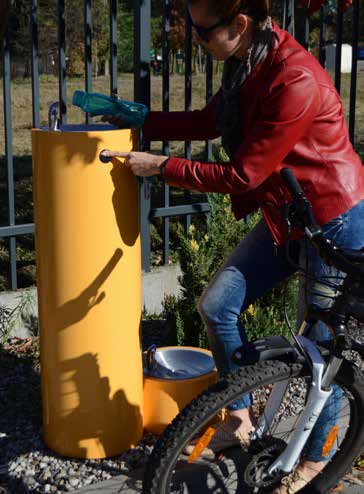
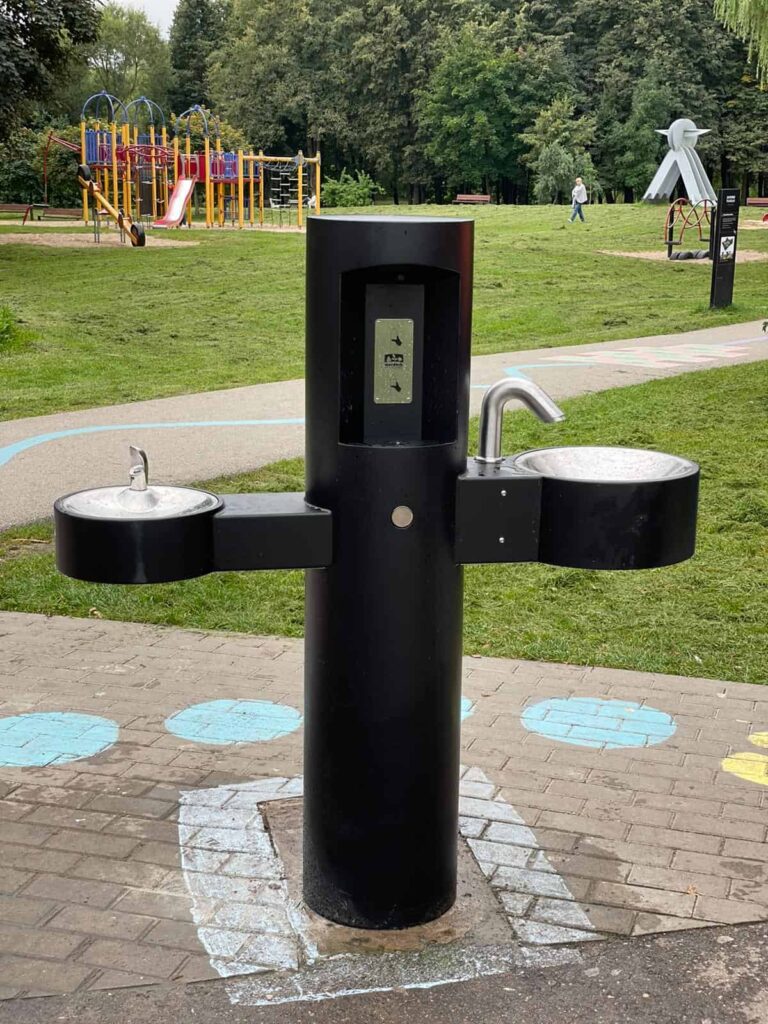
Our range is extremely varied and tailored to the needs of different users. In addition to standard drinking water dispensers, we also offer:
Drinking water wells are not only a convenient and healthy solution for people using cycle routes and sports facilities, but also an important step towards sustainability and environmental protection. The introduction of our innovative sprinklers will help to improve the quality of life of the community, promoting healthy habits and caring for the planet.
We invite you to learn more about our offer and join the health and environmental initiative!
In this section you will find a range of practical information related to our solutions. In the articles, we share our experience, discuss implementation steps and highlight good practices. It is a reliable source of information and advice on the provision of drinking water in public spaces, the legal regulations in this area, the benefits of installing drinking water dispensers and the technological aspects in this field.
We look forward to reading!
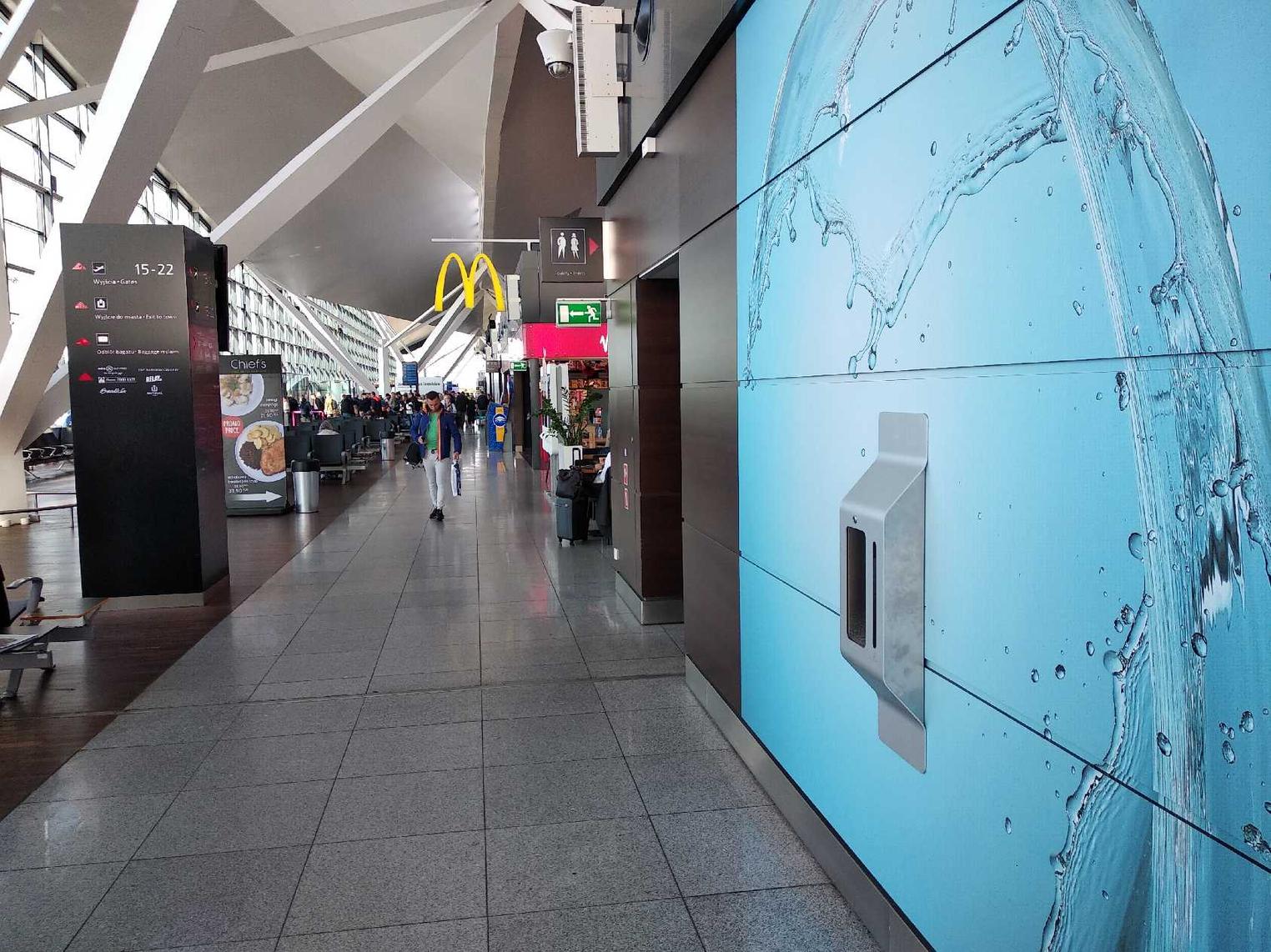
In recent years, more and more Polish airports have decided to install drinking water stations and dispensers. Such solutions are already in place at the airports of Warsaw, Gdańsk, Radom and Rzeszów and are highly appreciated by travellers.
The main advantage of the availability of free drinking water at airports is that it can save money. Travellers no longer have to spend considerable sums of money on bottled water, the price of which at airports is usually much higher than elsewhere. Thanks to the dispensers, they can easily fill their bottles, which is particularly useful before long flights.
"It's a great solution. I fill up my bottle before every flight and I don't have to worry about running out of water during the journey," says Anna, one of the passengers using Warsaw Chopin Airport.
Airports in Warsaw, Gdańsk, Radom and Rzeszów are just a few of the places that have decided to take care of the comfort of their passengers by installing drinking water dispensers. This is a step towards improving the quality of service and raising standards at Polish airports.
In Gdansk, dispensers are located at several strategic points in the terminal, making them easily accessible to all travellers. Rzeszów, on the other hand, boasts modern stations that not only provide water, but also promote ecology by encouraging the use of reusable bottles.
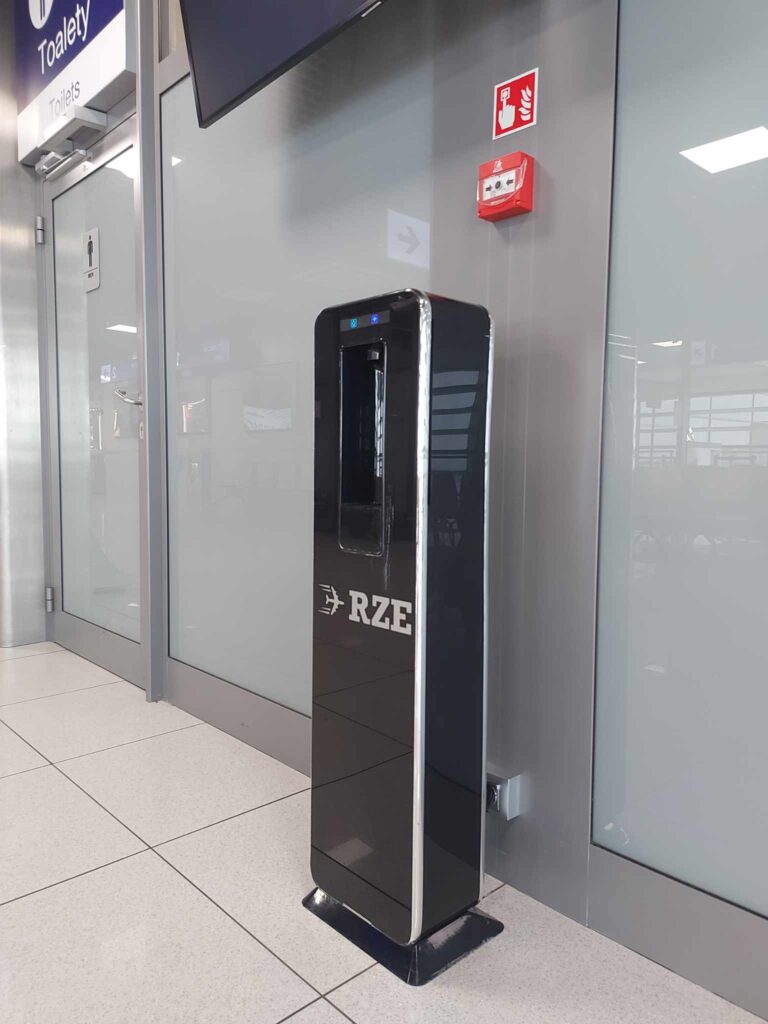

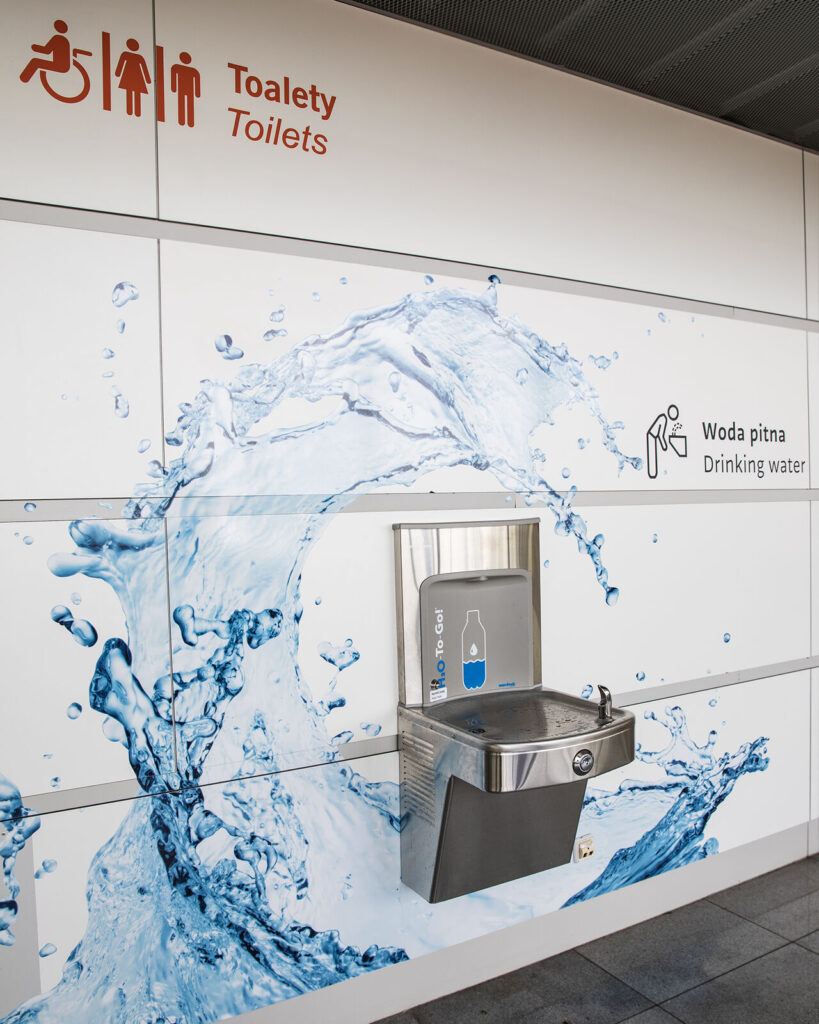
Polish airports are following in the footsteps of their foreign counterparts, where drinking water dispensers are standard. For example, in many airports in the United States, Canada, Australia or in European countries such as Germany and France, access to free drinking water is commonplace.
Introducing this on a wider scale would help to make journeys more comfortable and promote eco-friendly habits among passengers.
https://www.zdrojownia.pl/ Drinking water dispensers at Polish airports is an initiative that deserves recognition. Access to free drinking water is not only financially beneficial for passengers, but also contributes to environmental protection by reducing the use of plastic bottles. It would be worthwhile for other airports in Poland to follow in the footsteps of Warsaw, Gdańsk, Radom and Rzeszów by introducing similar solutions, which are sure to be positively received by travellers.
In this section you will find a range of practical information related to our solutions. In the articles, we share our experience, discuss implementation steps and highlight good practices. It is a reliable source of information and advice on the provision of drinking water in public spaces, the legal regulations in this area, the benefits of installing drinking water dispensers and the technological aspects in this field.
We look forward to reading!

More and more people are wondering about the quality of tap water and its suitability for drinking. In Poland, tap water is regularly tested and meets strict quality standards, which means you can drink it without worry. But what if we want to enjoy sparkling water without having to buy bottles from the shop? The answer is our water dispensers, which allow you to get sparkling tap water - deliciously chilled and tasty.
Our water dispensers are the ideal solution for those who want to enjoy sparkling water without leaving the house. With these, tap water can be deliciously chilled and fizzy, making it perfect for any occasion.
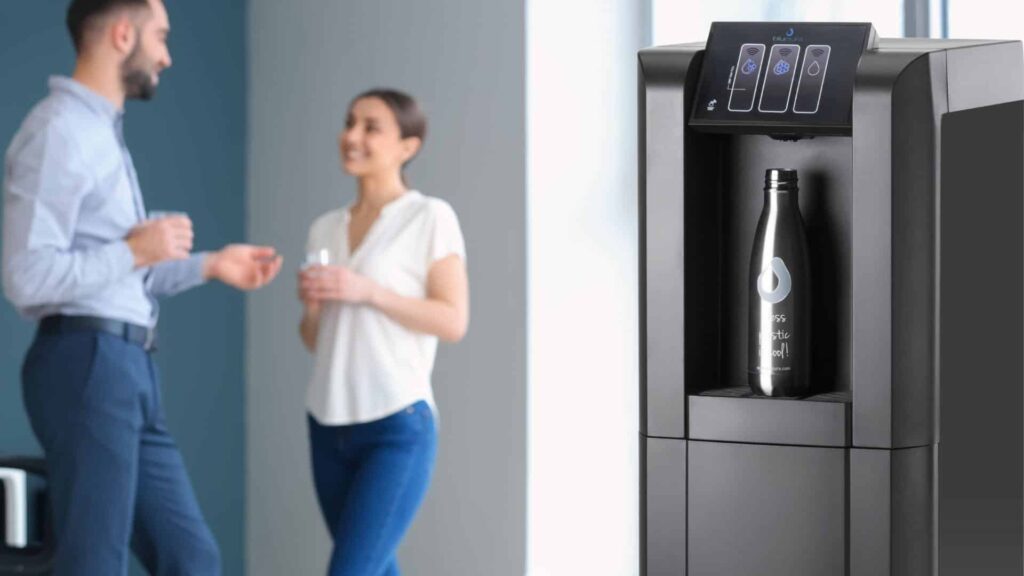
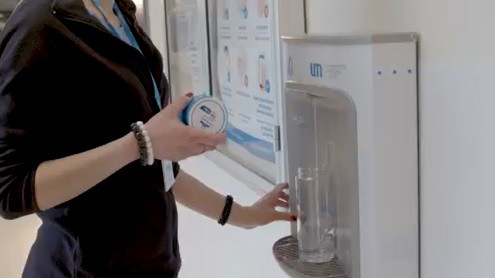
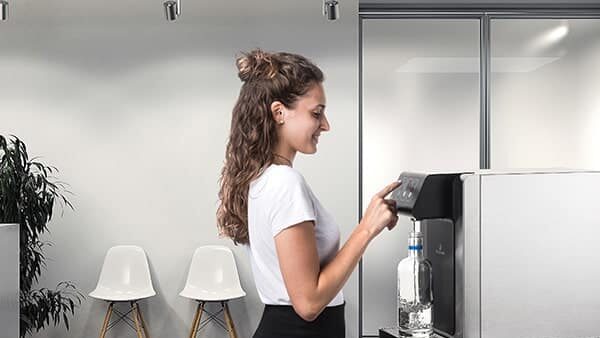
Although tap water is safe to drink, some people may have concerns about the quality of their plumbing. In such cases, it is worth taking advantage of the optional filters and antibacterial lights that we offer with our dispensers.
Tap water in Poland is of good quality and can be drunk without fear. However, for those who want to enjoy sparkling water, our dispensers offer the ideal solution. With them, the water is not only tasty and chilled, but also safe thanks to optional filters and antibacterial lights. By choosing tap water and our dispensers, we save money, care for the environment and make our lives more comfortable.
Take a look at our range and find out how easy and convenient it is to enjoy quality water every day.
In this section you will find a range of practical information related to our solutions. In the articles, we share our experience, discuss implementation steps and highlight good practices. It is a reliable source of information and advice on the provision of drinking water in public spaces, the legal regulations in this area, the benefits of installing drinking water dispensers and the technological aspects in this field.
We look forward to reading!

Proper hydration is crucial for the health and wellbeing of everyone, regardless of age. However, in hot weather, the need for adequate water intake becomes particularly important, especially for the most vulnerable groups such as the elderly and young children. Lack of adequate fluids in the body can lead to dehydration, which in turn can have serious health consequences. Public drinking water outlets and springs play a key role in providing access to water, helping to maintain the health and wellbeing of all those who are thirsty.
The elderly and young children are more susceptible to dehydration for several reasons:

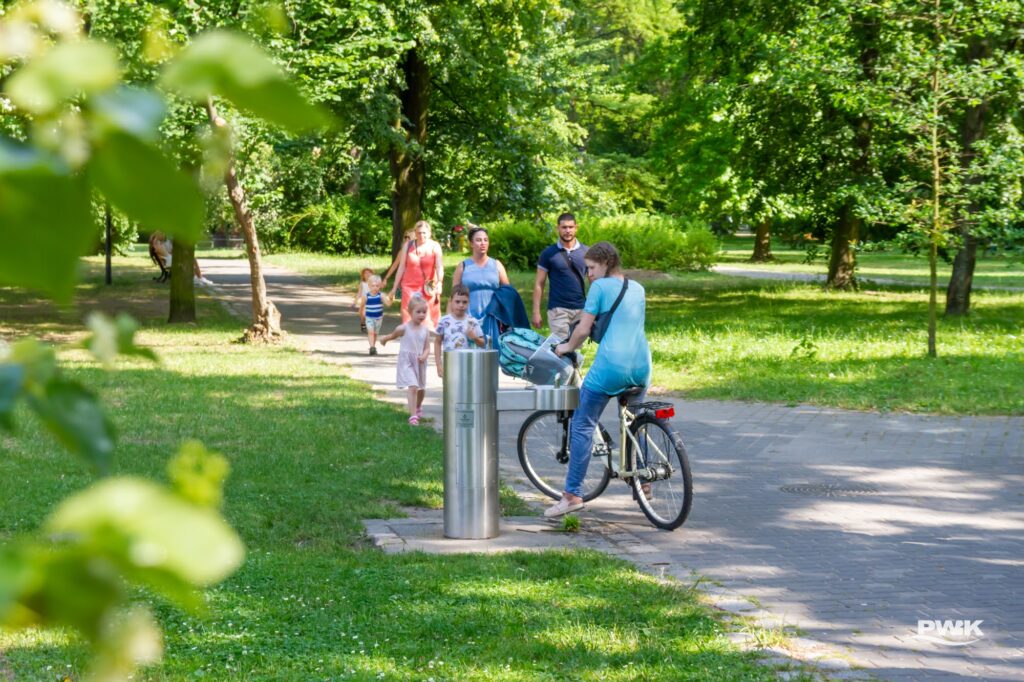

Public water springs Drinking water and springs are an important part of urban infrastructure that supports community hydration, especially in hot weather. Here are some of the ways in which these facilities contribute to public health:
Adequate hydration is an indispensable part of maintaining health and wellbeing, especially in hot weather. The elderly and young children are groups particularly vulnerable to dehydration, so it is important to ensure their regular fluid intake. Public drinking water wells and springs play a key role in ensuring easy access to water for all, contributing to public health and promoting healthy habits throughout the community.